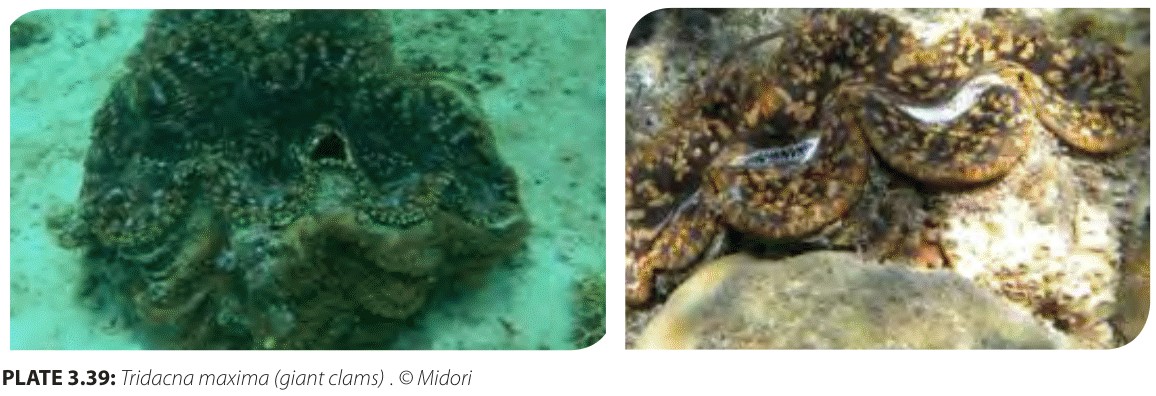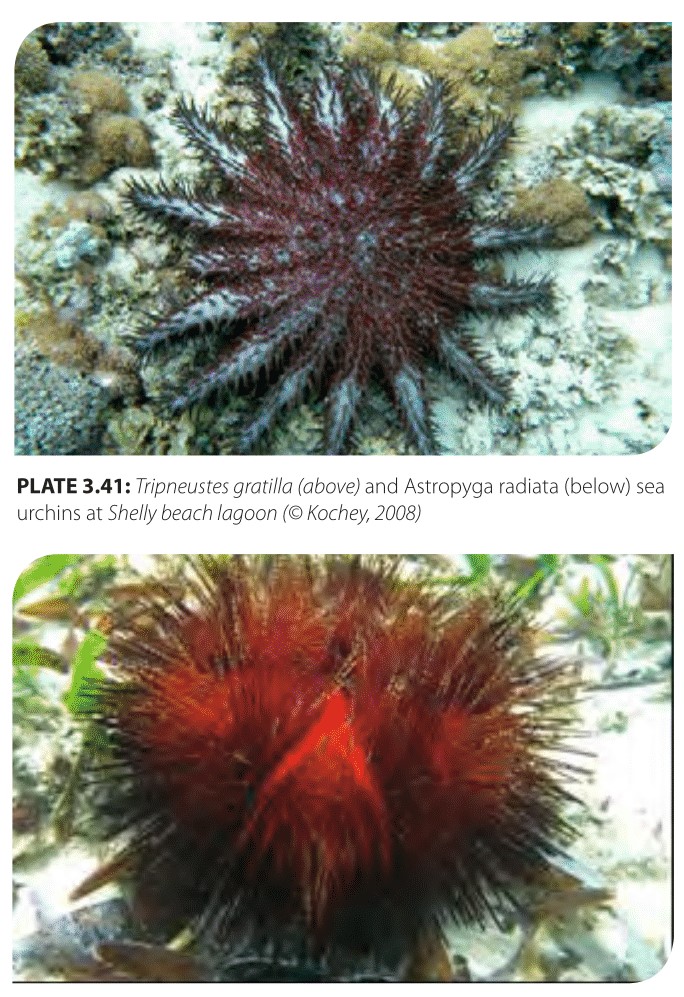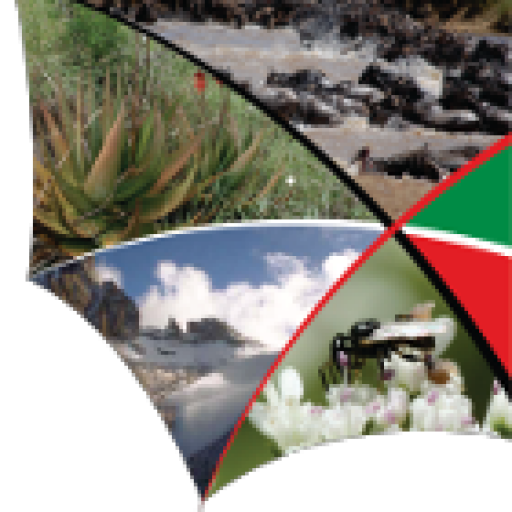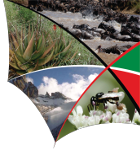Molluscs
Marine invertebrates
Marine invertebrates cover many phyla ranging from microscopic bacteria and zooplankton to giant molluscs. The more conspicuous and ecologically important phyla include plankton, corals, flatworms, bristle worms, anemones, jellyfish, insects, echinoderms, crustaceans and molluscs. Some 343 species of crustaceans have been recorded in Kenya, including crabs, prawns and lobsters.
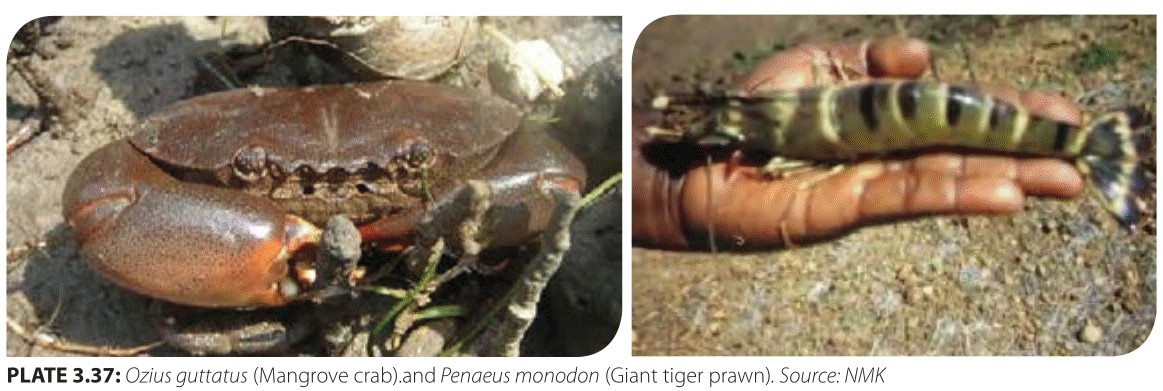
A total of 297 species of molluscs have been recorded in Kenya. Molluscs play a major role in marine foodwebs and in regulating ecosystem functions, including nutrient recycling and predation. Molluscs, especially squids are an important source of food for fish and humans. Over 45 species of shells are traded as curios, including the giant clam Tridacna maxima and Tridacna squamosal. Dangerous molluscs, causing harm to humans, include species of cone shells such as Conus geographus and Conus textile. Nudibranch molluscs are amongst the most dazzling animals of the coral reefs—a great attraction to beach holiday-makers.
